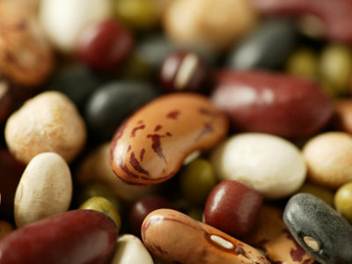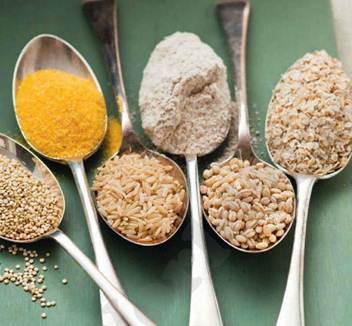A great
source of protein and fibre, they also taste delicious! They form a key part of
a balanced diet and we should all be eating more of them. Here's how to make
them part of your healthy eating plan.
Pulses: The nutritional low-down
This family
includes all varieties of beans and lentils. As an added bonus, they are one of
the cheapest sources of protein around, as well as being gentle on the planet,
requiring far less energy to go from field to plate than meat. They are also
endlessly versatile.
Pulses
contain protein, fibre, minerals and B vitamins, and help to lower blood
cholesterol levels. They also count towards one of your five a day.
However,
pulses are not a "first class" protein, in that they don't contain
all the essential amino acids necessary for growth and health. For this reason,
they should always be combined with wholegrains and some sort of vegetable. In
vegetarian societies, as in parts of India, this is why you'll see lentils or
chickpeas often combined with rice or chapati. So it's still perfectly possible
to get all the nutrients you need when you are cutting down on meat or fish.
The
exception to this is soya, which has a higher balance of amino acids. Soya also
contains unsaturated fat.
Using pulses
Apart from
lentils and split peas, other dried pulses need to be soaked before cooking.
Check the use-by dates: if stale, beans and lentils will never soften, no
matter how long you cook them for. The bonus of pulses for the cook is that
they can absorb all different sorts of spicing so you can give them an Indian
flavor in a lentil dish such as dahl, or a Mediterranean one, by adding olive
oil and lemon to borlotti beans, for example. If you are using canned pulses,
drain and rinse them under cold running water before use. This washes off the
excess brine and unwanted saltiness.
Pulses
o Aduki beans
o Black-Eyed beans
o Borlotti beans
o Broad beans
o Cannellini beans
o Chickpeas
o Kidney beans
o All lentils – brown, green, red and puy
o Mung beans
o Pinto beans
o Soya beans
o Split beans

Pulses
Cereals
Common cereals
o Barley
o Bulgar wheat
o Corn
o Malt
o Millet
o Oats
o Rice
o Rye
o Wheat

Common cereals
Cereal fact file
Cereals
such as wheat and barley are at their most nutritious in their wholegrain form,
when they contain higher levels of B vitamins and fibre. They are also a good
source of carbohydrate and protein.
Most of the
fibre, vitamins and oil are contained in the base, called the germ, and the
outer layer of the grain, the endosperm. The more refined the food, the lower
it is in natural fibre and nutrients. So brown rice or wholewheat are healthier
choices than their refined counterparts.
Spelt has
become very on trend in the past few years yet it’s an ancient crop, which was
mentioned in the book of Exodus. Most spelt products - including flour and the
pearled grains - are wholegrain, so high in fibre. However, although the gluten
in spelt is more easily digestible than in wheat, it is not suitable for
coeliacs. It has a nutty sweetness to it and is quite delicious.
Most cereals contain gluten except
o Maize or corn, used for popcorn, polenta (cornmeal) and
cornflour
o Millet, used in making flatbreads in Asia and North
Africa
o Oats - because the germ is left intact, oatmeal is
quite high in protein and oil, but the latter makes it go rancid more quickly.
The soluble fibre contained in oats has been found to help lower cholesterol
levels.
o Rice, which is a staple for over half the world's
population. Brown rice is higher in B vitamins and calcium than white. Using
white or brown rice really depends on what you are cooking as the flavors are
quite different.